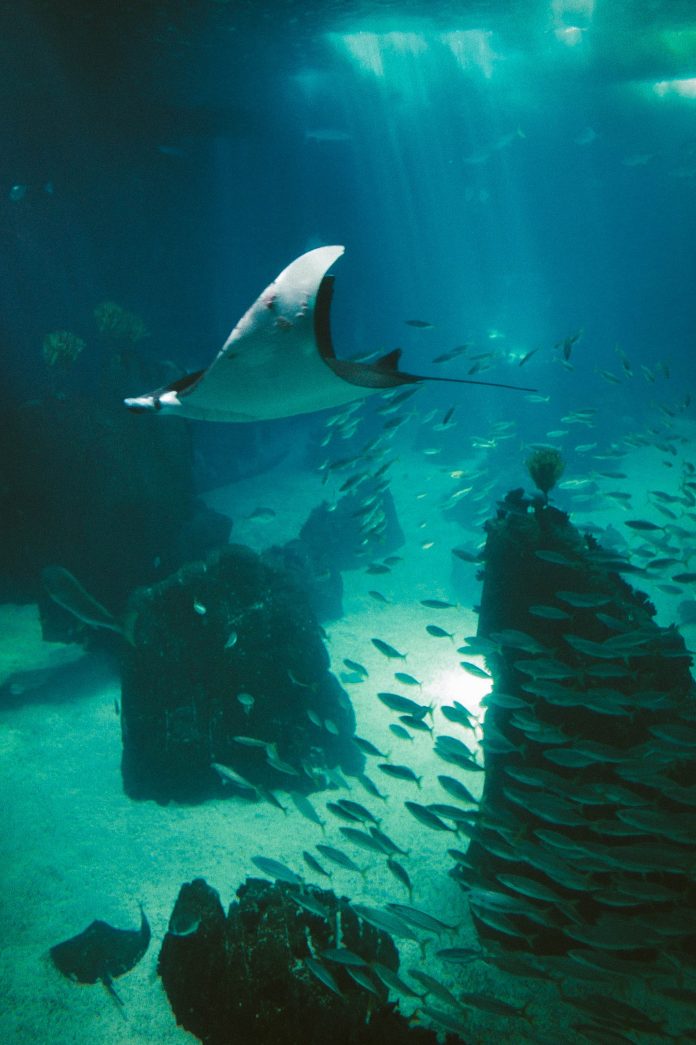On a small, remote island, sixty sea miles from the mainland of Fiji, we were living with a friendly Fijian tribe belonging to the weaving clan.
My son Keshet at ten years old already had a history of living in Africa, Israel and Mauritius. His ability to blend with different cultures, pick up their language and participate naturally in their daily activities, was remarkable.
On a warm tropical evening, he disappeared from sight with the village children on a small canoe, on their way to throw fishing nets near a small islet, far in the distance. Together they threw the nets, and clambered back onto the overcrowded canoe, homeward bound. The twilight took them by surprise as they spent time playing games in the warm, turquoise lagoon. The boys showed him how to swirl a vortex with their hands in the water and call up luminescent creatures, shining in the looming darkness.
Laughing and splashing on their way, a few boys were swimming beside the overweight canoe.
Keshet was happy to swim and spent most of his time underwater. About half way home the kids in the canoe called to him “Be careful Keshet, we are in the home of the Manta rays, don’t touch the sand!”
“What?”
“You are swimming over Manta rays, don’t disturb them, don’t put your foot on the sand, stay afloat!”
“Ok”, Keshet called, continuing to stay cool and pretending not to be petrified.
He looked towards the beach and it seemed a very long way. As he tried to concentrate on never putting his foot down, the lagoon became increasingly shallow. He wondered how to stay on the surface as the sand grew closer and closer to his body.
There was no choice but to put all his strength into swimming slowly on the surface, inch by inch. The darkness became more and more creepy with knowing that the Manta rays were watching him from below.
The laughing and splashing had abated and an eerie silence took its place. He could hear his own heart beat and felt desperate to relax his legs. He looked around him and saw two other boys, doing the same. The canoe stayed close and all the kids held their breath.
Time stood still and his arms and legs ached. He had to continue, no matter what. He could feel the tension in the air and realized the darkness had taken over and he couldn’t see the beach. He tried to focus on the canoe and follow it as closely as possible.
He reached the shore feeling as heavy as lead and walked up to his father with a lump in his throat, pushing back the tears. He had turned white. His father saw immediately that something had happened, put his arm around him and said “Come, let’s sit under the tree and you can tell me everything.”
This is the story of how my son Keshet, acquired his Fijian name which means ‘swims with Manta rays’. The villagers sat in a circle, presented him with a special ‘bilo’ of Kava in honor of his strength and courage. He had earned his identity within the tribe.
Bilo – coconut container
Kava – powdered root mixed with water.
The Karidis are an Israeli/South African artist family who have lived and worked in South Africa, Israel, Mauritius and Fiji. Maiyan studied art, anthropology and linguistics and was trained in mosaic restoration in Israel. Tovi studied ceramic design at Betsalel Academy of Arts in Jerusalem. He is also a sound engineer. Their children, Mistorin and Keshet have lived amongst different cultures for most of their lives. Keshet is currently at school at Herzlia High School in Cape Town. These stories form part of a series of experiences of Jewish identity in extraordinary locations.
To read the June issue of the Chronicle online, click here
To read about Martin Margolius’ leap off Signal Hill, click here
To read about singing sensation Josh Abrams, click here
To find out more about the Winter Warmer Campaign, click here











